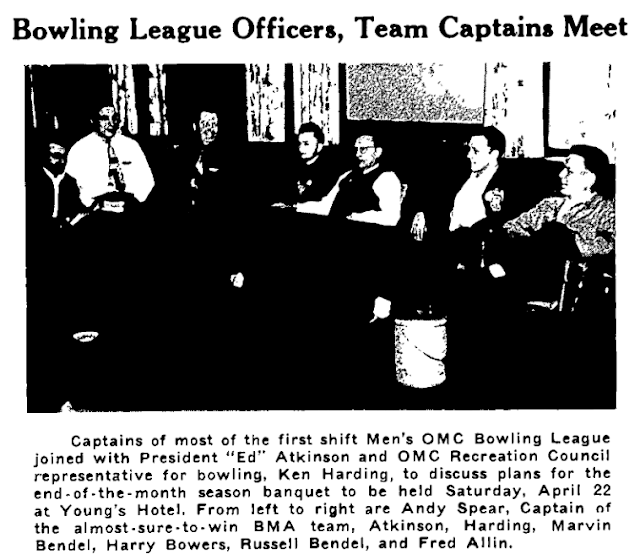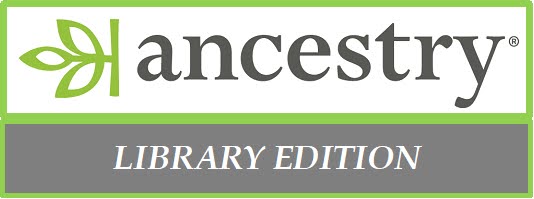 |
| Match Tips (Ohio Match Co. Newsletter), 31 August 1950, p. 5, accessed at MCDL Digital Archive. |
In honor of Labor Day, this week’s blog post focuses on our ancestors’ professions. Have you ever wondered how one of your ancestors made a living? Keep reading for four resources that can help answer this question!
1. Census Records
One of the easiest ways to learn about your ancestor’s occupation are census records. Beginning in 1850, the U.S. Census included information on an individual's “profession, occupation, or trade.” Initially this data was only recorded for men, but within a decade it was recorded for women, too. As an example of how census records can help, follow A. I. Root’s professional career through the census.
In 1870, A. I. Root worked in manufacturing watch chains and rings.
 |
| 1870 U.S. Census, Medina County, Ohio, Medina Township, p. 15, accessed on Ancestry Library Edition. |
By 1880, he had begun working with bees…
 |
| 1880 U.S. Census, Medina County, Ohio, Medina Village, p. 30, accessed on Ancestry Library Edition. |
 |
| 1900 U.S. Census, Medina County, Ohio, Enumeration District 49, p. 12, accessed on Ancestry Library Edition. |
You may be able to find additional information on ancestors who made their living in either agriculture, manufacturing, or other industries during the late 1800s. On this blog, we’ve previously discussed using Agricultural Schedules to learn more about your family’s farm. Additionally, there are separate censuses (or schedules) for manufacturing and industry. These records indicate your ancestor’s trade, number of employees, what materials they needed for their work, how much they produced and other details. Only a few industry schedules exist for Medina County; here is a sample from 1850:
 |
| 1850 U.S. Census, Industry Schedule, Medina County, Ohio, Medina Township, accessed on Ancestry Library Edition. |
City directories often include individual’s professions and help fill the gaps between censuses. Some directories will note two addresses for individuals, one being their home address, and the other as their work address. Here’s an example from the 1948 Medina City Directory:
 |
| "Medina, Ohio ConSurvey Directory" (Ohio: Mullin-Kille Company & Medina Gazette, 1948), p. 211, available at Virginia Wheeler Martin Family History & Learning Center. |
3. Newspapers and Company Newsletters
Newspapers – especially obituaries – can be a good source of information on your ancestor’s profession. More recent obituaries (those published after 1900) may include details about the deceased’s employment, noting where they worked and for how long.
Company newsletters, on the other hand, can tell you more about where your ancestor worked and the culture of their workplace. For example, in “Match Tips” (a newsletter for Ohio Match Company) there’s an article from March 1950 about the company’s bowling leagues… and it includes a picture, too!
 |
| Match Tips (Ohio Match Co. Newsletter), 31 March1950, p. 7, accessed at MCDL Digital Archive. |
4. Estate Records
This resource will take a little sleuthing. Estate Records (also called Probate Records) often include an inventory of the deceased’s belongings. Looking at a list of your ancestor's belongings can be a powerful tool for learning more about their livelihood. From their belongings, you may be able to infer their profession.
For example, Orin Webster of Richland County, Ohio passed away around 1863. Here is a sample of the property sold from his estate:
 |
| Richland County, Ohio Probate Court, Inventory vol. 1, p. 37, Sale Bill for Orin Webster, 25 February 1863, accessed on Ancestry Library Edition. |
Given the number of books on law – plus the blank deeds – in Webster’s estate, it seems like he might have been a lawyer. The 1860 U.S. Census confirms this theory.
 |
| 1860 U.S. Census, Richland County, Ohio, Springfield Township, p. 198, accessed on Ancestry Library Edition. |
Find & Access These Resources
When you research your ancestor’s profession, you may find that not all of the resources you’d like to use are online. Below are suggestions for where you can access the resources discussed in this blog post.
Ancestry
Some resources are available on Ancestry. Ancestry Library Edition is available for you to use from home, for free, with your MCDL Library Card through December 31, 2021. To take advantage of this opportunity, access Ancestry through the library’s website here. When you click “Use This Resource” you’ll be directed to a page where you can enter your library card number. It will then take you to the Ancestry Library Edition homepage.
From the homepage, to find the materials discussed above, click “Search,” then click “Card Catalog.”
In the “Card Catalog,” search the "Title" field to access these collections:
For Census Records, search “United States Federal Census”
For Agricultural, Manufacturing, or Industry Censuses, search “U.S., Selected Federal Census Non-Population Schedules, 1850-1880”
For City Directories, search “U.S., City Directories, 1822-1995”
For Ohio Estate/Probate Records, search “Ohio, U.S., Wills and Probate Records, 1786-1998”
Virginia Wheeler Martin Family History & Research Center
Many of the resources discussed above can be accessed onsite at the FHLC or through the library’s website.
For directories of Medina, the FHLC has a collection of various years between the late-1940s and the mid-1990s. These include county-wide directories, and directories for the cities of Medina and Wadsworth.
For Medina County obituaries, search the obituary index and use the obituary request form at https://mcdl.info/obituaries.
For Medina County newspapers, the Medina County Gazette, Medina Sentinel, and other local newspapers can be viewed on microfilm at the library. Medina County newspapers from various decades can also be searched online at http://mcdl.info/newspapers.
For Medina County company newsletters, search at http://mcdl.info/newspapers.
Online Memory Projects & Newspaper Databases
For newspapers and company newsletters outside Medina County, try out these memory projects and newspaper databases.
Newspapers.com Library Edition (access with your MCDL library card)
Courthouses & Archives
While many probate/estate records can be found in Ancestry's "Ohio, U.S., Wills and Probate Records, 1786-1998" collection or the FamilySearch Catalog, others can only be accessed through county courthouses or county/regional archives. For example, in Medina County, though wills can be accessed through Ancestry Library Edition or FamilySearch, the inventories described above are only available at the Medina County Probate Court. Before visiting any research facility, it is best to call in advance to confirm hours, policies, and fees (see more Research Trip Tips here.). In Medina, contact the Probate Court for more information at 330-725-9703 or learn more at https://medinaprobate.org. Be aware that record searching services and staffing are currently limited due to COVID-19.
Ask for Help
If you’re having difficulty finding the resources you need, please contact the MCDL Genealogy Team. We are happy to advise you in your search. Call us at 330-725-0588 x5017 or email the team at me-team.genealogy@mcdl.info.
We also love hearing about your research successes! Did your ancestors having any interesting professions? Share your discoveries in the comments below!
P.S. All this weekend, enjoy free access to specific record groups on the subscription version of Ancestry.com. You will be prompted to create a free account. Access expires September 6, 2021 at 11:59 p.m. ET. Learn more at https://www.ancestry.com/cs/laborday.






No comments:
Post a Comment